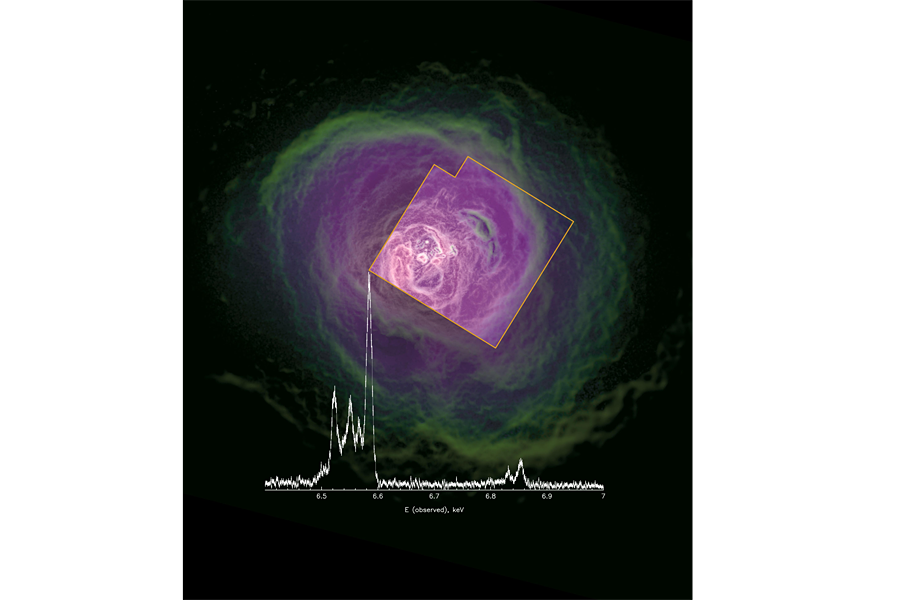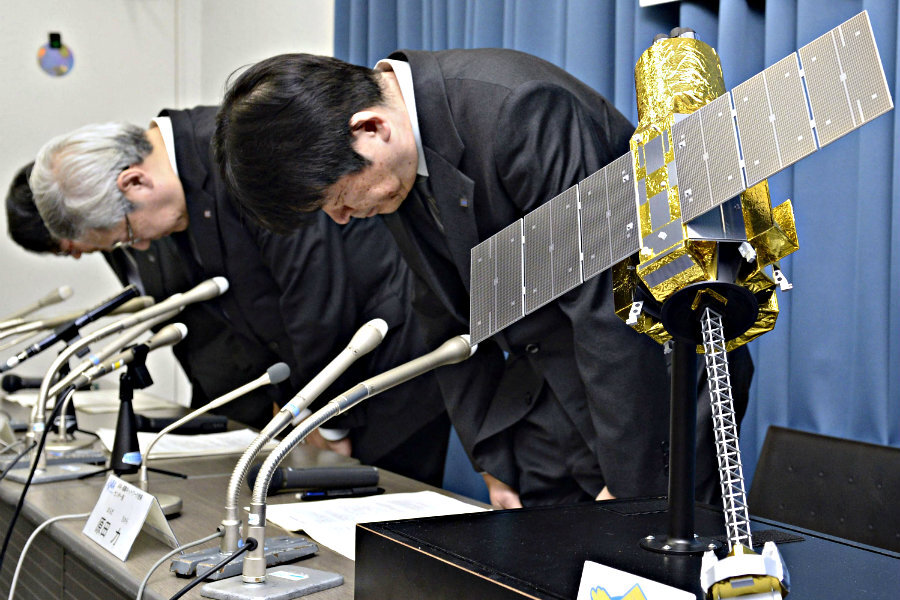Doomed Hitomi satellite sends a parting gift to Earth
Loading...
Scientists lost contact with Japan’s Hitomi satellite in March, when the satellite suffered a “mission ending spacecraft anomaly.” Yet, just before they lost control of the mission, scientists were able to use the spacecraft to obtain unprecedented data on the Perseus cluster of galaxies.
The Japan Aerospace Exploration Agency (JAXA) mission was initially intended to study galaxy formation and how black holes interact with spacetime. Hitomi carried an instrument named the Soft X-ray Spectrometer (SXS) that allowed scientists to measure the movement of gas in the Perseus galaxy cluster, just before the mission was lost.
“The data were exquisite,” team member Brian McNamara of the University of Waterloo, told Scientific American. “We’re really pleased with what we got, but we’re pretty sad about what we didn’t get and what might have been.”
Using SXS, scientists were able to determine that gas movement between galaxies in the Perseus cluster was less turbulent than they had previously imagined. Their findings are reported in a paper published Thursday in the journal Nature.
The instrument, developed by scientists at NASA's Goddard Space Flight Center, is itself a breakthrough in the technological tools that scientists have available to study the universe. SXS measures the X-ray spectrum of gas emissions using a very detailed approach called microcalorimetry that can reveal the elemental composition of the Perseus cluster without blurring spectral lines.
SXS is so precise (30 times more accurate than than the previous measuring mechanism) that scientists say they can probably now better determine the mass of galaxies far, far away than that of our own Milky Way galaxy, Dr. McNamara told the BBC.
"Being able to measure gas motions is a major advance in understanding the dynamic behavior of galaxy clusters and its ties to cosmic evolution," study co-author Irina Zhuravleva said in a statement by the SLAC National Accelerator Laboratory in Menlo Park, Calif. "Although the Hitomi mission ended tragically after a very short period of time, it's fair to say that it has opened a new chapter in X-ray astronomy."
The Perseus galaxy cluster, the last thing Hitomi saw before it broke apart, is located 240 million light-years away, and is filled with gas that can reach temperatures of about 90 million degrees Fahrenheit. The cluster also contains a supermassive black hole, with the region around it expelling massive amounts of gas, the movement of which scientists sought to measure.
As a result of Hitomi’s observations, scientists now know that while emissions from the black hole are swift, and therefore stir up other gasses, the gas movement is comparatively slow and only slightly turbulent.
In fact, Hitomi showed that turbulence is only responsible for about 4 percent of gas pressure, and gas velocities measured only about 365,000 miles per hour (a surprisingly slow rate for outer space).
By gently stirring the gas in the galaxy and keeping it hot, however, Perseus’ black hole could be limiting the formation of new stars, according to Space.com. It is only when gasses cool down that they can form stars.
"We already knew that supermassive black holes, which are found at the center of all galaxy clusters and are tens of billions of times more massive than the sun,” said Norbert Werner, a scientist who analyzed Hitomi data, according to Space.com, “could play a major role in keeping the gas from cooling by somehow injecting energy into it."
What this means is that supermassive black holes can play a limiting role in the growth of a galaxy.
“This is a fundamental insight because this is a mechanism that probably controls the growth of a large fraction of the galaxies in the universe,” Macnamara told Scientific American. “In that sense it’s very exciting.”
Scientists say that despite Hitomi’s early demise, its discoveries mark a “new chapter in X-ray astronomy.” Two previous attempts at using microcalorimetry technology failed in the early 2000s. The next similar mission is scheduled to be launched in 2028.









